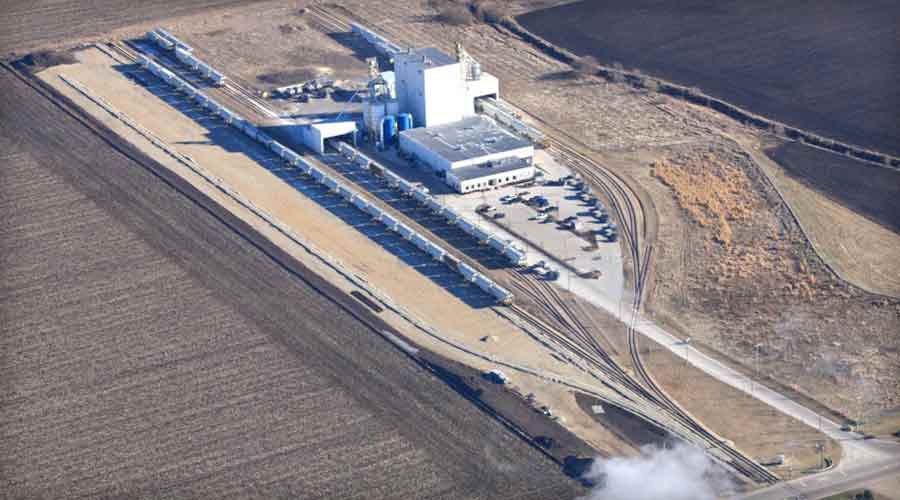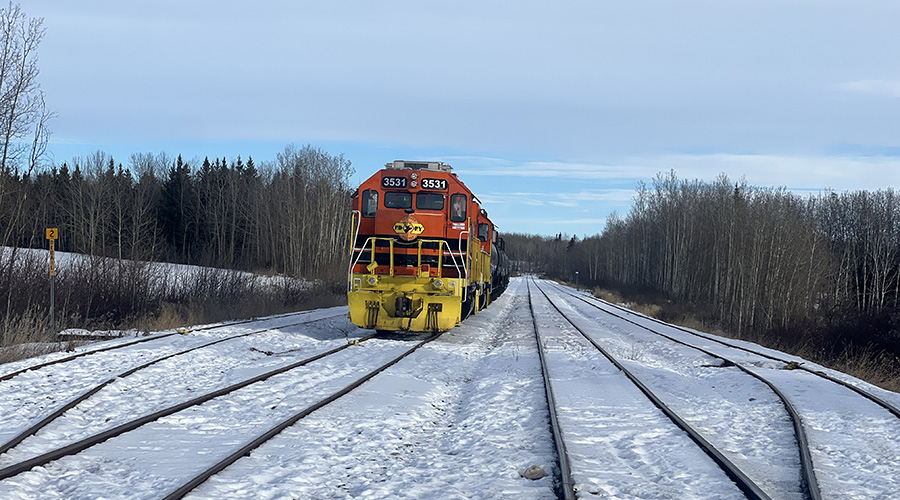City of Rochelle Railroad set to reinstate intermodal service
9/14/2022
By Jeff Stagl, Managing Editor
In July 2019, Union Pacific Railroad closed its 1,200-acre Global III intermodal terminal in Rochelle, Illinois. At the time, the railroad reorganized its six intermodal facilities in the Chicago area as part of the Unified Plan, the Class I’s precision scheduled railroading strategy.
The Global III closure was a shot in the arm for UP’s primary objectives: reducing complexity for intermodal customers, boosting operational efficiencies and simplifying its network in the nation’s largest rail hub. But it was a big blow to the city of Rochelle, which resides about 80 miles west of downtown Chicago.
The municipality with 9,000-plus residents lost a major employer and a major driver of traffic for its short line, the City of Rochelle Railroad Co. (CIR). The 40-year-old short line owns 12 miles of track, three interchange yards and two transload yards, and interchanges with UP and BNSF Railway Co. Burlington Junction Railway (BJRY) operates CIR under a contract with the city.
Opened in 2003, Global III had a maximum capacity of 720,000 container lifts per year and was handling about 200,000 containers annually when it closed. A vast majority of the containers were filled with agricultural products, primarily grain. Now, that freight is trucked from the Rochelle area to either Chicago or Joliet, Illinois.
For Rochelle leaders, efforts have been in high gear the past three-plus years to reinstate intermodal service via CIR. They aim to divert more of the region’s freight back to rail and optimize the city’s and short line’s cargo-moving potential.
Rochelle is located at the intersection of Interstates 39 and 88 — both of which are logistics corridors that reach from Canada to Mexico and California to New York — and is near Interstate 80. Distribution efforts in the region can reach more than 80 million people within a 24-hour drive.
 Adjacent to one of the short line’s transload yards, the city plans to build a container storage facility with paved areas and a concrete transloading pad. City of Rochelle
Adjacent to one of the short line’s transload yards, the city plans to build a container storage facility with paved areas and a concrete transloading pad. City of RochelleIn addition, Rochelle recently invested more than $50 million in rail, road and utility infrastructure to serve rail-served industries of every size. The city offers ample land with rail access, fast-track permitting processes for industrial projects and dozens of accessible trucking operators.
With the rail, land, utilities, shippers and other key factors in place, the city is poised to re-enter the intermodal transportation business, says Jason Anderson, Rochelle’s economic development director.
"We are committed to finding a way to re-establish intermodal service,” he says.
Along with partner the Greater Rochelle Economic Development Corp. (GREDCO), the city recently identified an attainable one involving major agricultural product cooperative CHS Inc., which operates a biorefinery in Rochelle that produces ethanol. The company currently trucks all distiller's dried grains (DDGs) — an ethanol production byproduct — from the area.
The city is working with CHS to use CIR, interchange partner BNSF and other intermodal service participants to transport DDGs heading westbound for export to Pacific Rim destinations. The grains will be railed to the major ports in Los Angeles and Long Beach, California.
Rochelle plans to build an area to store containers on 10 acres GREDCO purchased next to one of CIR’s transload yards. GREDCO was the government agency that acquired the necessary property to establish CIR 40 years ago.
“We now are working on getting a number of agreements in place to re-establish intermodal service,” says Anderson.
The city needs to nail down pacts with CHS, its ocean shipping service provider CMA CGM Group, BNSF, BJY and a third party that would operate the container storage yard.
“We hope to have all the agreements in place by the first of October,” says Anderson.
He anticipates construction to begin in October on the container storage yard — which will feature paved areas and a concrete transloading pad — and intermodal operations to start in early December. The city also still needs to annex the land and zone it for intermodal operations, says Anderson.
The DDGs will move via a unit train. Back in 2015 — when CIR handled a lot of frac sand with UP and BNSF — the city helped fund a project involving the construction of a transload center and 3,500-foot extension of three tracks on CIR’s main system to create three 10,000-foot tracks that can accommodate unit trains.
The frac sand helped boost CIR’s annual carloads from 3,000 to 12,000. Currently, the short line serves 14 customers and moves lumber, frozen and canned food, ethanol and steel.
As for the planned intermodal service, CHS will be the sole customer for now, says Anderson.
“Other shippers that had used Global III are showing interest, but we tell them we have to crawl before we can walk,” he says. “We expect to move 220 containers per unit train, starting with one unit train per week.”
So far, the city has spent several million dollars on the project, while BRY’s cost has exceeded $1 million. BRY is acquiring two pieces of container-lift equipment — one new and one used — and is awaiting an additional locomotive, says AJ Martin, the railroad’s general manager. A handful of additional employees also will be needed in Rochelle for the intermodal service.
“We will have perhaps seven new jobs [there],” says Martin.
BRY also has contracted REMPREX to help with information technology requirements and is preparing to work with the third-party container yard operator, he says.
If the reinstated intermodal service proves successful, the city would expand it, Anderson says. GREDCO owns another 150 acres adjacent to the transload yard. The city eventually could extend four tracks to 15,000 feet and create a new interchange point with BNSF that would involve no grade crossings, says Anderson.
At some point, the intermodal service eventually might involve UP and garner more customers. But for now, size matters, Anderson believes.
“We will start small and grow from there,” he says. “This has enormous growth potential.”


